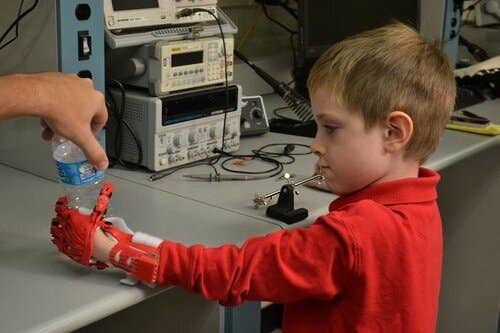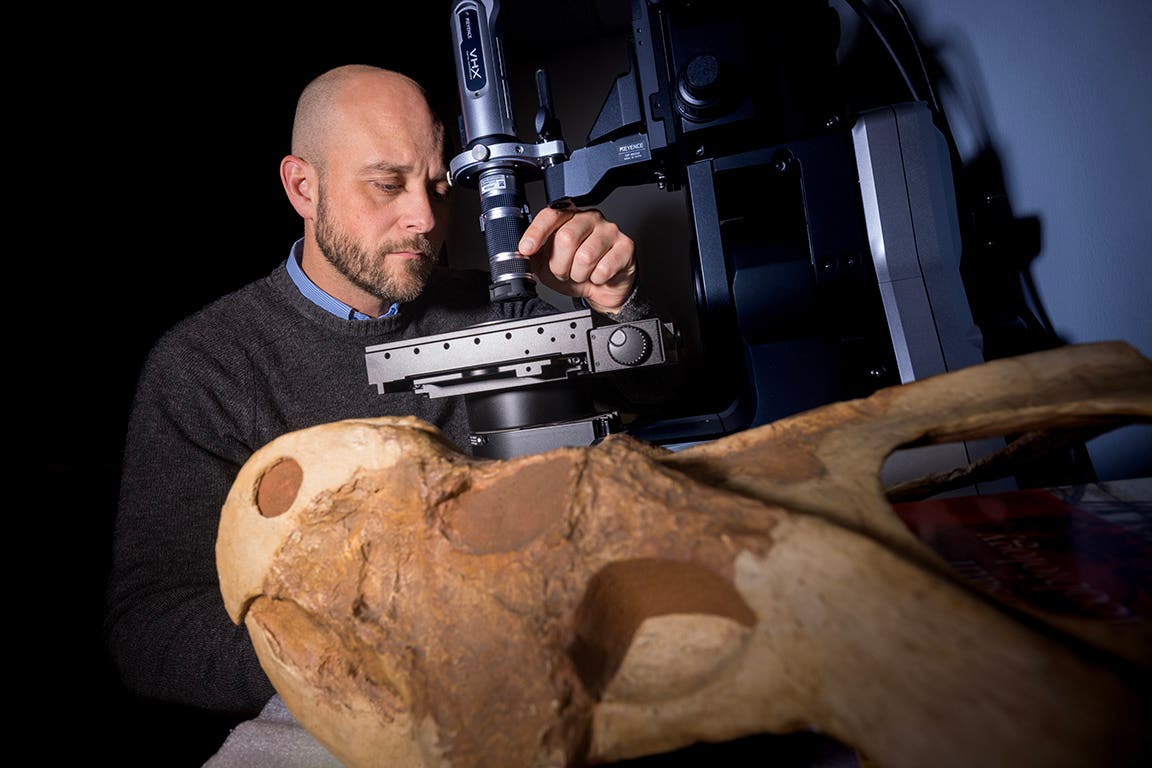The Helping Hand Project engineers prosthetic hands for children with upper limb differences
Helping Hand Project is composed of students who work to design and 3D print prosthetic hands for children who have upper limb differences.

[Nov. 13, 2021: Avery Davis]
The Helping Hand Project is composed of students who work to design and 3D print prosthetic hands for children who have upper limb differences.. (CREDIT: Joshua Wong)
NC State’s chapter of The Helping Hand Project is changing lives one prosthetic hand at a time. The organization is composed of students who work to design and 3D print prosthetic hands for children who have upper limb differences.
Andrew Hoang, a third-year studying biomedical engineering and outreach chair of the NC State chapter, said the purpose of the organization is to help children with upper limb differences feel connected to the community.
“The purpose of this organization is to raise awareness for kids in the upper limb difference community by bridging that community and connecting them with the overall community and making them feel welcome and not feel like an outcast,” Hoang said.
According to Hoang, the organization has four different departments that students can be involved with. The public relations team focuses on advertising, fundraising and branding, and the support team creates care packages for and serves as the liaison between the child’s family and the team creating the hands.
In the U.S. alone, there are at least 125 cases of children born each year with missing fingers on one or both of their hands. (CREDIT: Helping Hand Project)
Case design teams are the groups of students responsible for designing and perfecting the child’s prosthetic. According to Hoang, the newest division, research and development, focuses on finding new, innovative ways to make designs cheaper and more efficient.
Keith Abbey, a third-year studying biomedical engineering and a member of the outreach team, said there are two different types of case design teams.
Related Stories
“There's just a single team in case design that works with electromechanical parts, and specifically with that, they’re doing a lot of wiring for nerve impulses to finger movements in the hands,” Abbey said. “The rest of the cases that we work on are primarily static built, but dynamic motion, 3D printed devices which are controlled manually by the movement of the person’s difference.”
The Helping Hand Project traces its origins back to the summer of 2014 when Holden’s parents reached out to the Biomedical Engineering (BME) department at UNC Chapel Hill. They had heard of 3D printing being used to create prosthetic devices and were looking for someone who could build their son a similar device. (CREDIT: The Helping Hand Project)
Hoang said membership has more than doubled since last year with the number of students jumping from around 50 to 120 this semester. The organization works on seven to eight cases at a time, and each case design team is composed of eight to nine students and a case leader.
Jacob Walker, a fourth-year studying computer engineering and the chief technology officer, explained what 3D printers the Helping Hand Project uses.
“We use the 3D printers in the biomedical engineering lab, and there are three of them, and they’re BCN3D Sigmas,” Walker said. “We have access to all three of those, and we have a lot of different filaments in different colors. Those are all supplied through our fundraising endeavors and through the BME department as well.”
According to Abbey, though the organization focuses on prosthetic hands, on occasion, they complete special projects.
“We do some specialized projects for kids who might be interested,” Abbey said. “The progress of those, it's a bit slower, because it's really custom designed. But there have been in the past where a kid wanted, like a flipper. ... We do projects primarily with hands because that aligns with our name, but we sometimes go out of our way to do a little bit more.”
According to Hoang, being a part of the chapter is rewarding because he gets to apply the engineering knowledge he learns in class to real-world applications.
“It's great that I'm using my engineering skills and all of the things that I've learned in school so far and applying it to help these kids,” Hoang said. “It's really rewarding. It makes you feel good when you see the smiles on these kids' faces.”
Abbey said he agrees, and one of his favorite things about being a part of the Helping Hand Project is the impact that he gets to make on the children’s lives.
“People who do get these cases are very grateful that they have these devices because they feel like they're part of society,” Abbey said. “I noticed that for several of the kids that got a hand from Helping Hand. They went immediately to their school and showed it off to everybody. It was really just a powerful thing to know that you're helping these kids out, you're making them feel a lot better about their lives and it's just something that I never would have thought would have been possible when I entered college.”
Hoang said he wanted to stress that students of any discipline, not just engineering, can join and make important contributions to the Helping Hand Project.
For more good news stories check out our Good News section at The Brighter Side of News.
Like these kind of stories? Get The Brighter Side of News' newsletter.
Tags: #Good_News, #Students, #Kindness, #Kids_Doing_Good, #Prosthetics, #Donation, #Community_Service, #The_Brighter_Side_of_News



